A flintlock needs a secure method of attaching the flint. There is spirited disagreement on the best way to do this. Whether to use lead or leather is the subject of this study. Perhaps this study will help your flintlock to ignite black powder more quickly. Because of the recent discussions about attaching flints with both lead and leather, I decided to see if I could use photographs to study the problem. An experimenter does not dare approach his work with a preconceived answer, and I assure you that I have “no dog in this fight.”
I began by selecting two chipped English flints as close to the same shape as I could. I glued a piece of leather to one and make a lead wrap for the other. I hammered the lead fairly thin and trimmed off all that was unnecessary.
Previous experience with timing locks has allowed me to conclude that the first strike of the flint is never the fastest in a series, so both flints were struck 3 times before the photography started.
With the lock mounted in the fixture, I set the camera for a 4 second time exposure. I opened the shutter and fired the lock during the 4 second delay. All sparks made during the strike are shown in the pic.
During the first session I fired the lock 5 times and then turned the bevel down and fired 5 more. Then the other flint was installed and I repeated the process. Both flint/lock combinations worked slightly better with the bevel up.
In the following series of photos, Leather and Lead photos will appear in the order each group was taken. Leather will be first in a pair, followed by the Lead photo. Photo captions identify the method of attachment and the number of the trial.
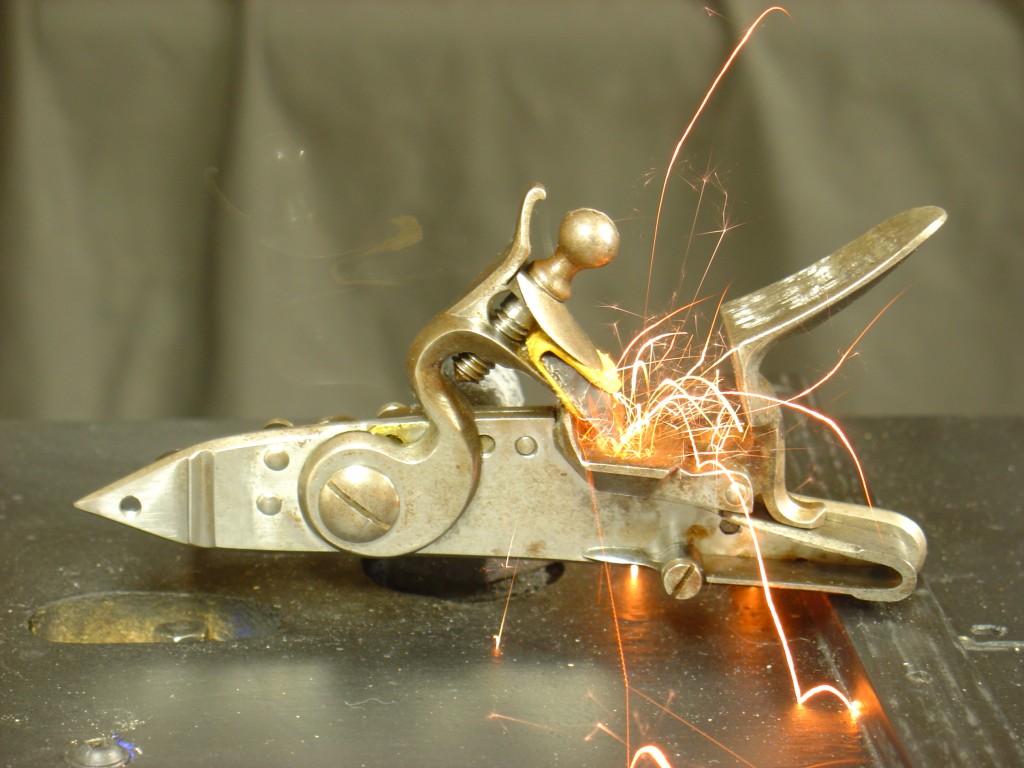
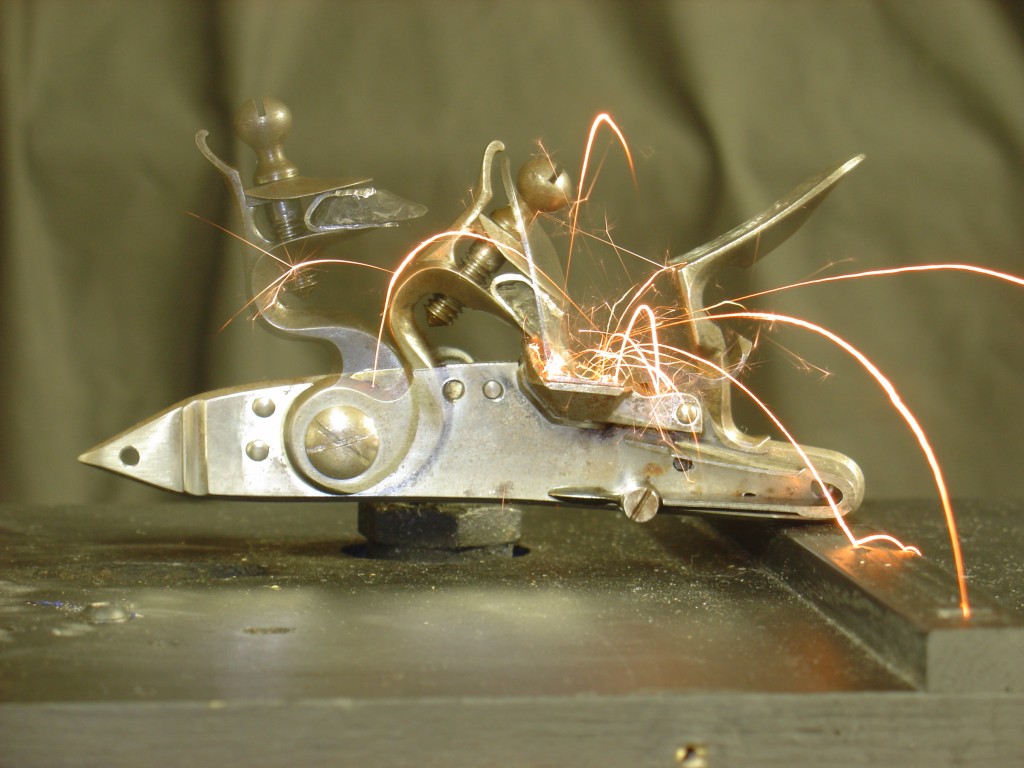

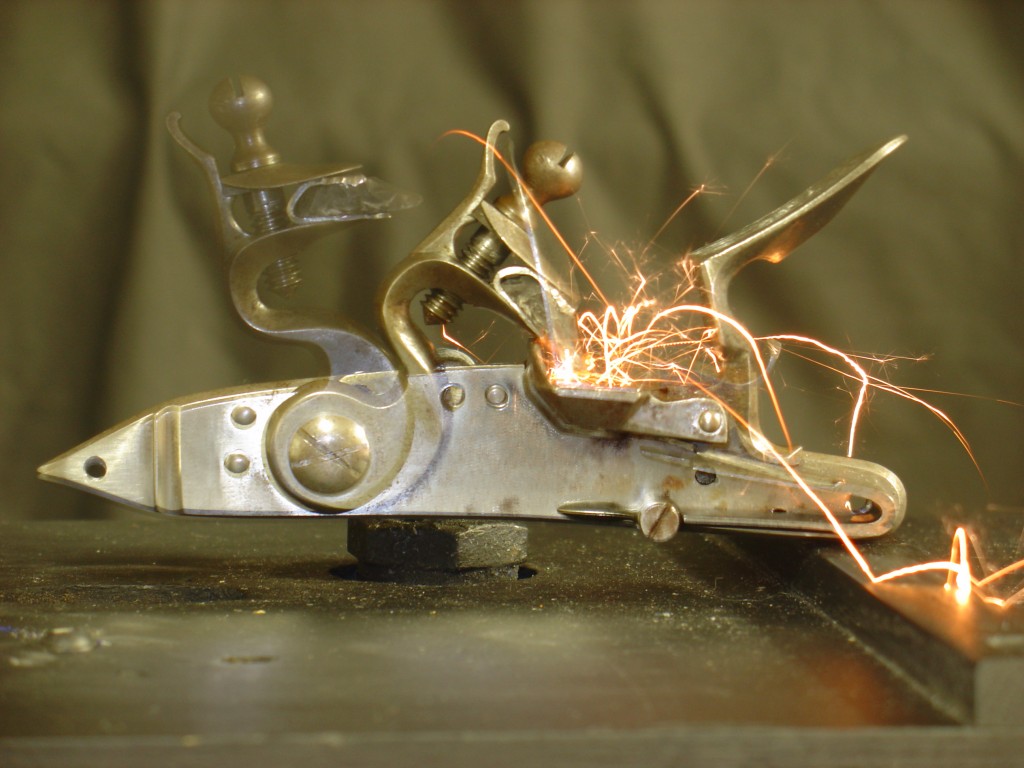
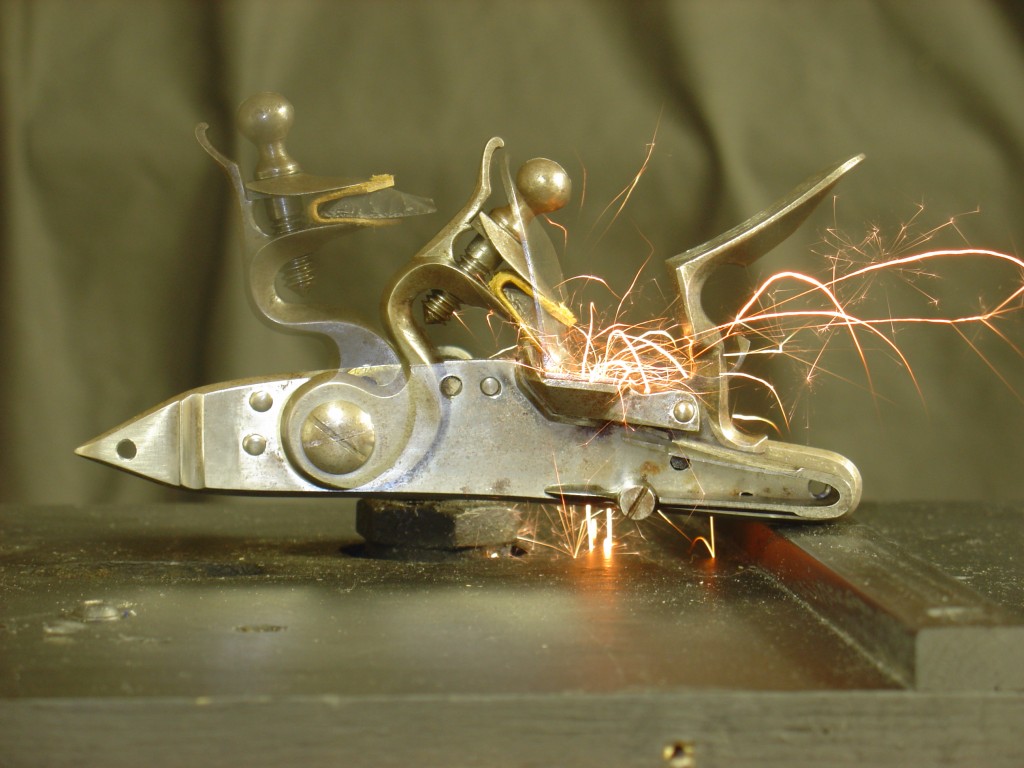
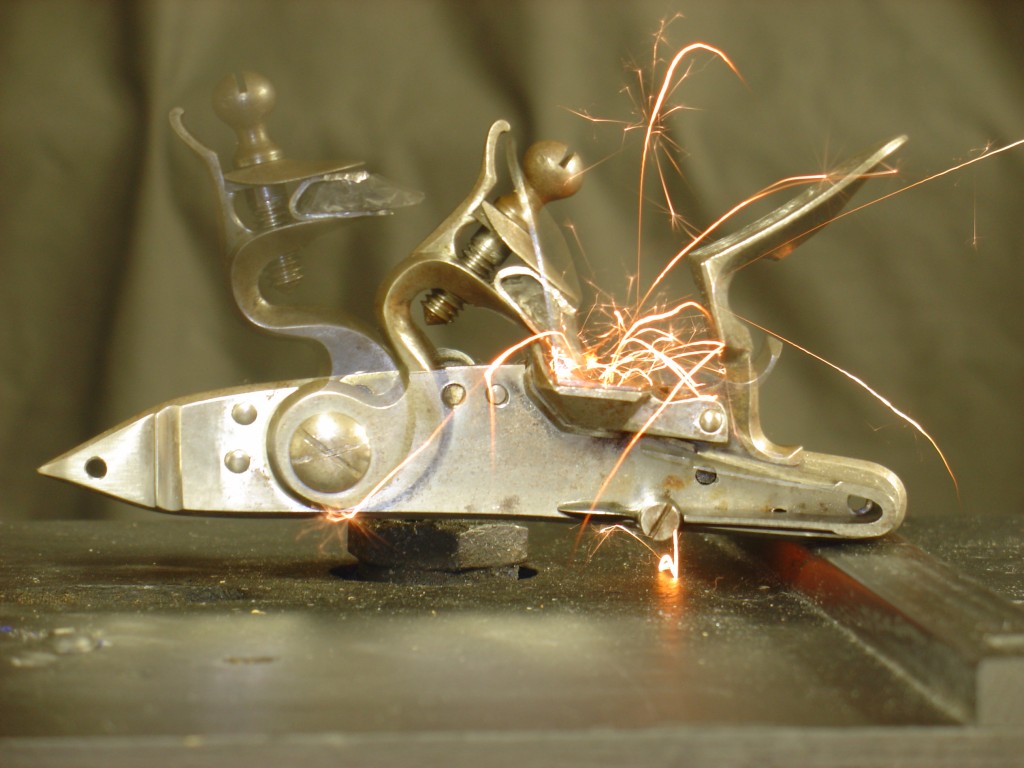
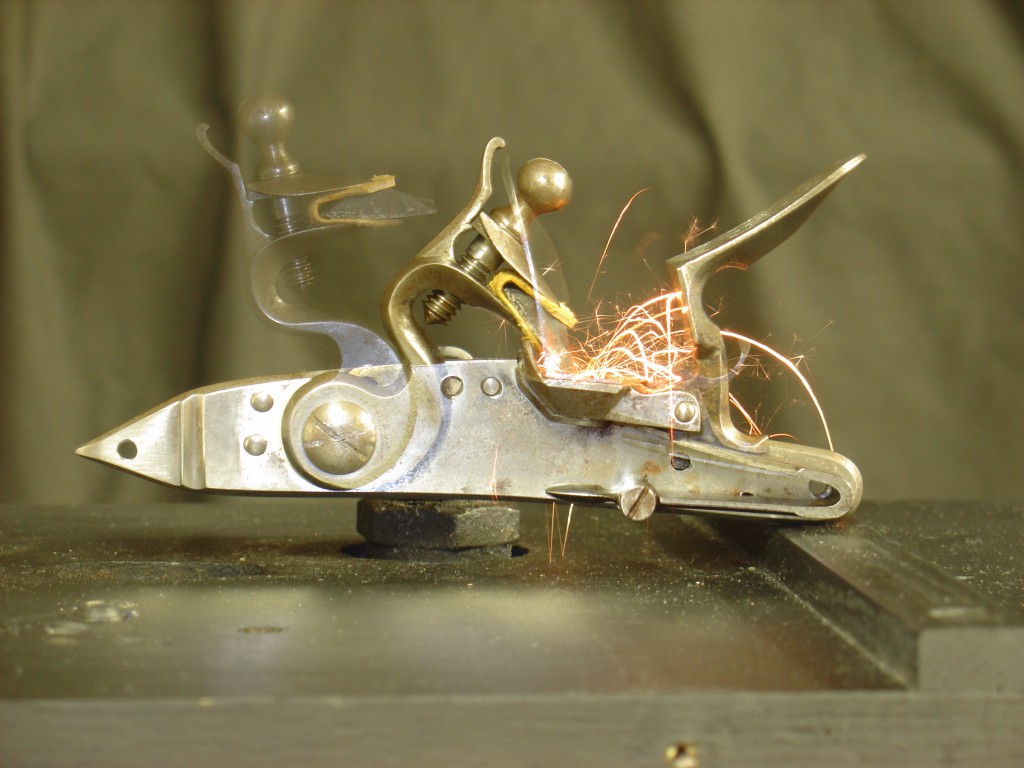
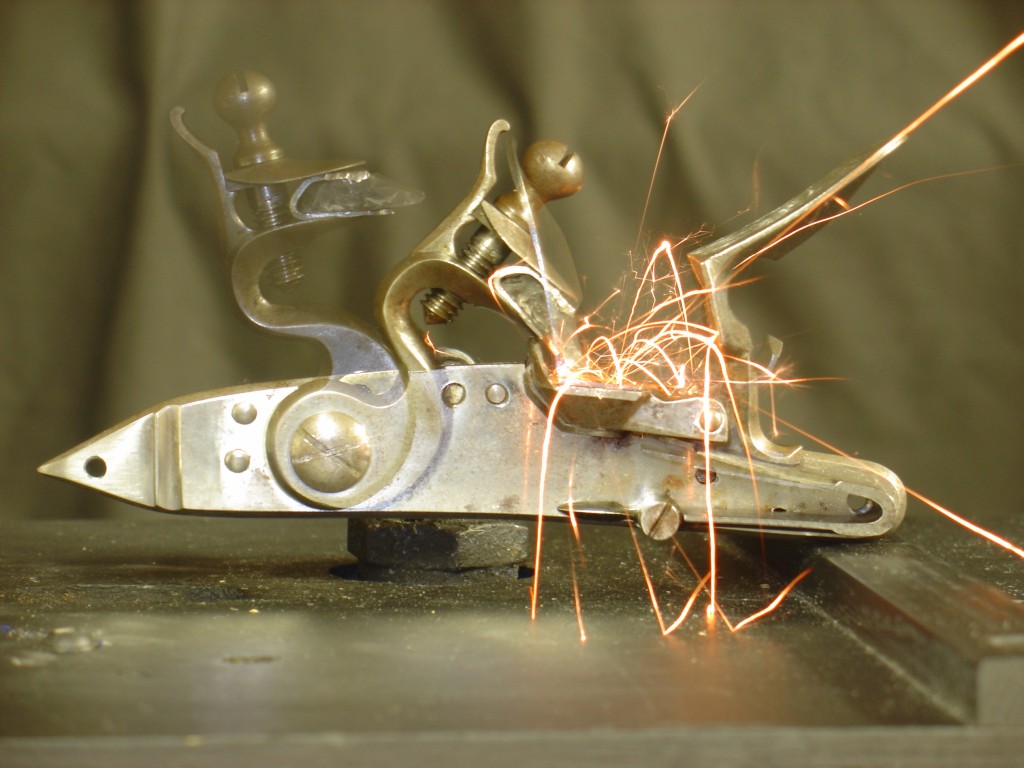
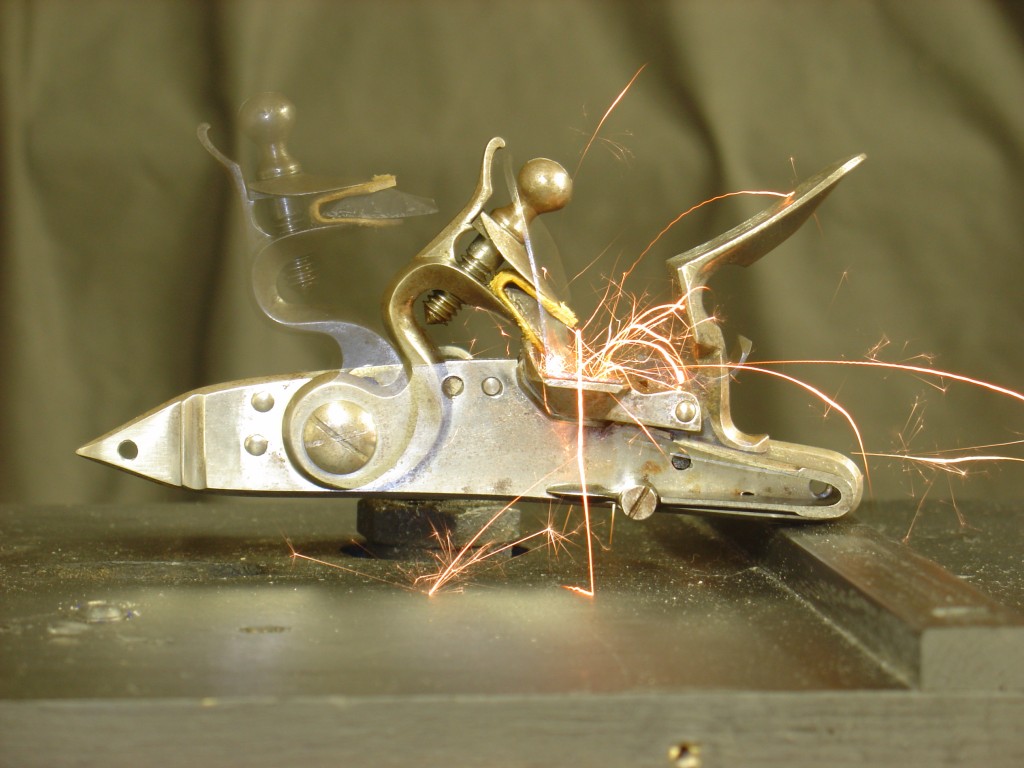
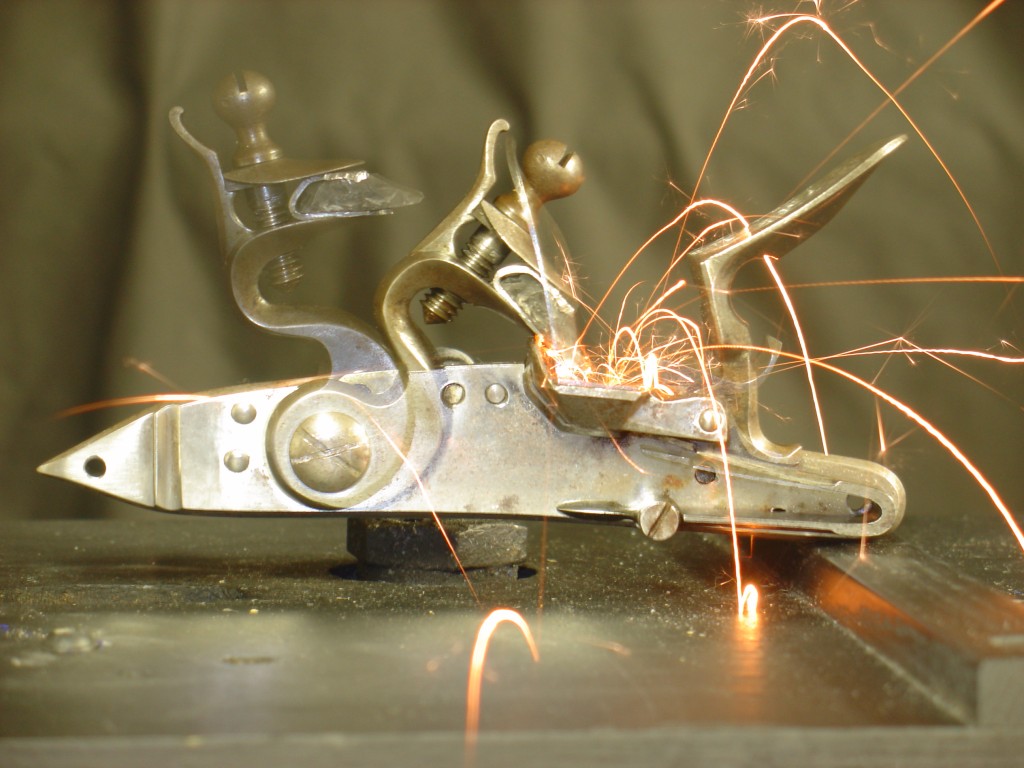
I did another set that continued the sequences until the flints were knapped. However, those showed nothing substantially different from the pics above.
In this experiment I tried to keep variables to a minimum. The same lock is used; BTW same lock that was used for the slow motion stuff earlier. The flints were mounted the same – as best I could. Photography methods were the same. The flints and the method of securing them were the variable. The fact that two flints were used means that they could wear at different rates.
If I were to draw a conclusion it would be that I can not see significant differences in the performance of the two methods. I doubt that I would be at a disadvantage with either method. However, this is a very well-made lock and others may act differently. Your conclusions and mileage may vary.
(Reformatted 9/29/2016, Larry Pletcher, editor)
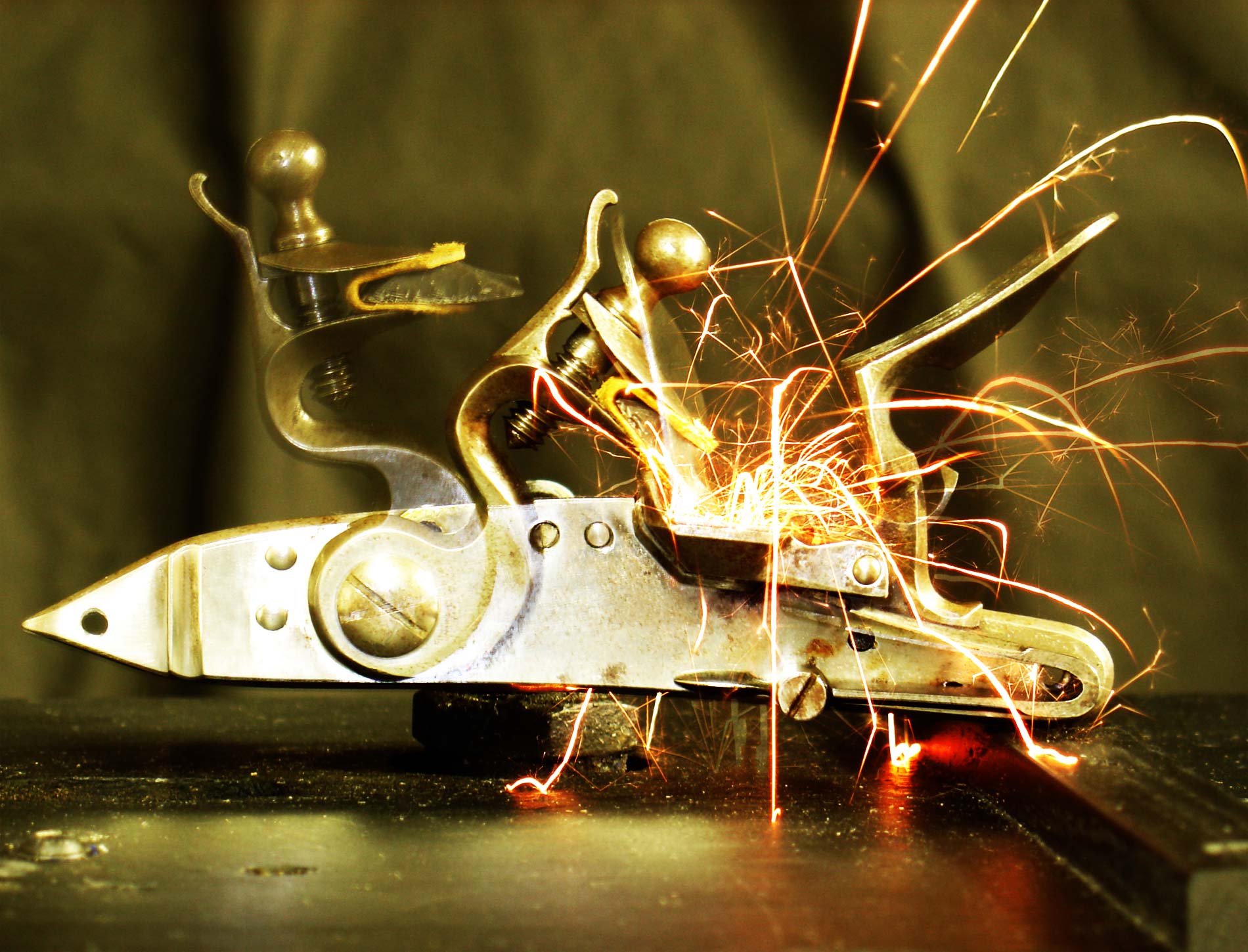
Leave a Reply
You must be logged in to post a comment.